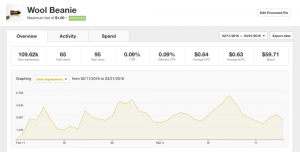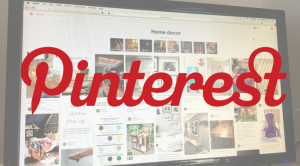What do Pinterest and intent marketing have in common? Everything.
You go to Google. You search for a brown leather couch. You click on one of the results that takes you to an online furniture store. That same brown leather couch you clicked on but didn’t buy suddenly appears in your newsfeed and on the Weather Channel website as you check the five day forecast.
That’s a little thing we like to refer to as intent marketing and it shows real results.
Intent marketing means serving relevant content to people who have intentionally searched for your product or brand. Serving an ad to a person interested in the industry or product does not necessarily mean that they intend to purchase, resulting in wasted ad dollars.
When most marketers think about intent marketing, they think Google AdWords or Facebook’s website custom audiences.
But what about Pinterest?
Pinterest’s advertising platform was made available to all users last year, but few marketers seem to be taking advantage of the ad space. Launched as a social media network to visually share images, videos, and ideas, the platform has evolved in to a search tool for many users. Need to know how to DIY a desk? Pinterest it. Looking for an app to aide your productivity at work? There’s probably a pin for that.
Pinterest ads allow marketers to target users based on keyword searches, allowing brands to narrowly target consumers based on what they are searching. The metrics allow you to remove keywords that aren’t generating clicks, and brands can set up a conversion pixel to track acquisitions that result from ad spend on Pinterest.

Parachute Media promotes pins for our in-house brand, Camping With Dogs. The image above details metrics for one of our most recent campaign optimized for website clicks.
If you find that your target demographic is active on Pinterest (i.e. don’t try reaching men above the age of 45 — they *probably* don’t spend their Saturday nights pinning cute wreath projects), investing in promoted pins could yield profitable results.
But before you start an ad campaign on Pinterest, consider these tips for designing ads optimized for the platform.
1. Extremely vertical images work best
Taking that extra step to design an ad that features a vertically cropped image will greatly affect the success of your campaign. Vertical images take up more space in the feed, capturing a user’s attention.
2. Use high-quality images
Pinterest is a visual platform, filled with high-quality images. How does your brand stand out? By using content that is aesthetically pleasing. Pay attention to image and composition ratios – images with contrasting colors draw more attention (and clicks).
3. Include soft calls to action
Marketers should over lay a lighter call to action on the image, sneakily asking people to do something with the pin. The text should be attention-grabbing, pulling the eye towards the pin’s contenet without directly asking them to buy.
4. Ask users to buy in the description copy
While we don’t recommend directly asking people to do something in the text edited on the image, we do suggest that marketers include a strong call to action in the description copy below the image on a promoted pin.
5. Monitor daily and make iterations
Like all social media marketing, Pinterest ads are in a constant cycle of iterations and A/B testing. What works for one set of keywords might not work for another, and the image you think is going to perform best might not generate many re-pins. Constantly test and make changes to find the copy/content combination that performs best.
Ready, set, pin! Let us know how your Pinterest campaign performs in the comments below.



